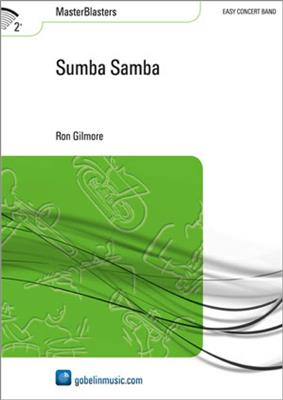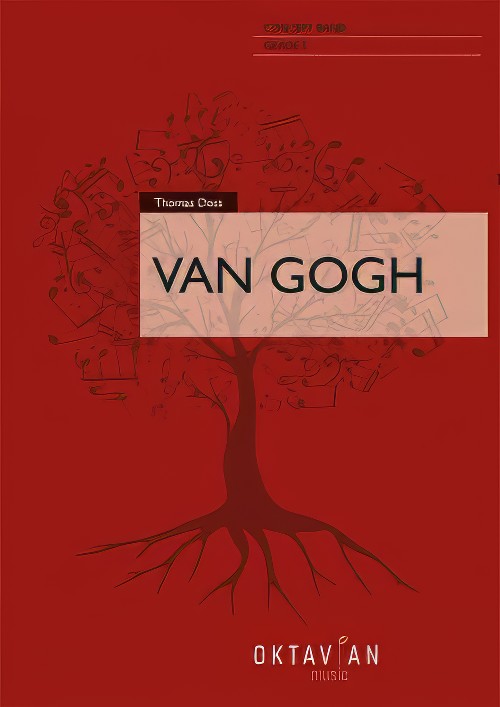Results
-
£72.10
-
£84.99
Pastorale - J.G. Brouwer
A sonorous work with a pastoral atmosphere. This composition is not based on a Christmas song, but fits very well in the program of a Christmas concert! drum-part ad lib.
Estimated dispatch 7-14 working days
-
 £154.99
£154.99Concertino for Xylophone - Jan Bosveld
This composition was commissioned by "Koningin Wilhelmina Wamel" on the occasion of its one hundred year anniversary. That it is a composition for xylophone and concertband lies in the fact that Harmony has a very talented, young percussion player in the person of Barry Jurjes. The piece is both melodically and harmonically based on four notes (C - Dflat - F - G). The structure is divided into four parts: slow - fast - slow - fast.
Estimated dispatch 7-14 working days
-
 £60.99
£60.99Sumba Samba - Ron Gilmore
The Samba is a Latin American dance, which is mostly associated with parties, as a result of the fast tempo in which it is usually played. 'Sumba Samba' forms an exception to this rule. In order to get this samba to swing it is important to stick to the tempo prescribed. 'Sumba Samba' starts with a motif which will play an important role throughout the piece. This motif can be heard in the first notes of the 'refrain' and, as said before, has been used in the introduction, as well as in the transition after the middle part (letter G). Furthermore, it plays an important role in the middle part itself (letter E), in which the samba has momentarily disappeared and acompletely different atmosphere has been created. At letter H we pick up where we left off with the samba and swing to the end of this composition.
Estimated dispatch 7-14 working days
-
 £104.99
£104.99Praise to the Lord - Carl Wittrock
This composition, based on the hymn Praise to the Lord, is comprised of eight separate parts that can be played together as a concert piece or opening work. The A and B sections are different openings, C is four-part arrangement of the hymn, D is a solo for four saxophones, or two trumpets and two trombones, E is a calm intermezzo, F a solo for trumpet or cornet, and G and F finally are a majestic or peaceful closing section. How will you choose to present this piece on stage?
Estimated dispatch 7-14 working days
-
 £42.50
£42.50Rockin' Bach - Eric Osterling
Eric Osterling cleverly takes the famous Minuet in G by Bach and transforms it into a rock tune in 4/4. Carefully written so that every section gets a chance to play the melody.
Estimated dispatch 7-14 working days
-
 £57.50
£57.50Sure on This Shining Night - Samuel Barber
G. Schirmer Concert Band - Grade 3-5 Using Samuel Barber's interweaving melodies and distinctive harmonies, Richard Saucedo has created this beautifully scored setting for concert band. Opening with solos for flugelhorn (ortrumpet), flute and oboe, the arrangement builds to a dramatic full ensemble peak then tapers to a sensitive and quiet ending. (Grade 3) (3:40)
Estimated dispatch 7-14 working days
-
 £52.70
£52.70 -
£60.99
Der Zaubermarsch - Rob Ares
On 30th September 1791, a few months before his death, the opera "Die Zauberflote" (The Magic Flute) by Wolfgang Amadeus Mozart was given its first performance. It was remarkable that despite his ill health and his disastrous financial situation he was able to compose a work of such comic genius. Mozart composed the overture in the two days before the premier of the opera and it is on this overture that this transcription is based. To perform the work 'a la Mozart' only the timpani part should be used, the additional percussion parts have been added by the arranger and are therefore optional.Mozart 40th SymphonyThe Austrian composer Wolfgang Amadeus Mozart lived atragically short life of thirty-five years. Towards the end of his life in the summer of 1788, he wrote three symphonies in the span of a little over six weeks. His Symphony No.40 in G Minor was one of those great works. This setting of the first movement from that Symphony provides ample demonstration of the composer's grace, inventiveness and pervasive sense of humour, which can be found throughout his music.
Estimated dispatch 7-14 working days
-
 £279.99
£279.99Van Gogh (Concert Band - Score and Parts) - Doss, Thomas
This composition is not a work inspired by the life of the famous painter, but rather an attempt at a pictorial immersion into his world. In addition to Van Gogh's character and tragic life, the technique he employed to create his works, the bright colours of his paintings and his view of nature served as inspiration for this musical work. Point by point, stroke by stroke, Van Gogh brought his own world to life on canvas.On the life of Van Gogh: The Dutch artist Vincent van Gogh was one of the most important pioneers of Modernism, despite being relatively unknown during his own lifetime. As an artist, he chose a life of poverty and seclusion. From today's perspective, his important woks were created from 1880 onwards, when he had already more or less succumbed to madness. While his earlier works could still be classed as contemporary, he matured into a pioneer of Expressionism with his later work indicating an increasing self-awareness. He was just 37 years old when he died but he created over 750 paintings and 1600 drawings in the last ten years of his life.The structure of the work:Start: Brushes and Paints: Van Gogh retired to Arles in southern France where he found his artistic home. The colours and flowering gardens of this landscape awakened in him an unbelievably great creative power.A: A Picture Comes into Being: Van Gogh's psychotic episodes and bouts of depression did not stop him from painting wonderful pictures. Hardly anyone recognised his genius during his lifetime, on the contrary, he often felt misunderstood.C: Paris - Arles: In Paris (from 1886), Van Gogh became inspired by the French art scene. His works found few takers, however. He met and befriended the painter Paul Gauguin, but the lack of success made Van Gogh short tempered, and he began to drink. Eventually, he moved from Paris to Arles in the south of France to establish an artists' collective with Gaugin. Within a few weeks, the two got into such a violent argument that Van Gogh attacked his friend with a knife. The friends parted ways and afterwards Van Gogh cut off his right ear. In 1889 he voluntarily admitted himself into a mental hospital at St. Remy, suffering from hallucinations and fearing that he would lose his mind.G: The Starry Night One of his most famous paintings, created in 1898.H: Death and Brotherly Love Vincent van Gogh accepted an invitation to Auver-sur-Oise in 1890. This was one of his most intensive creative periods. He also went there for treatment, but his mental state hardly improved. After an extended walk, he injured himself fatally with a pistol under mysterious circumstances. Not even to his beloved brother Theo, who had supported him all his life, did he reveal on his deathbed how the accident had occurred.J: Art Market Today, Van Gogh's paintings are among the most expensive paintings on the art market. How ironic, given that he could hardly sell a painting during his lifetime. "I put my heart and soul into my work and lost my mind in the process." (Vincent van Gogh)Duration: 13.15
Estimated dispatch 7-14 working days
